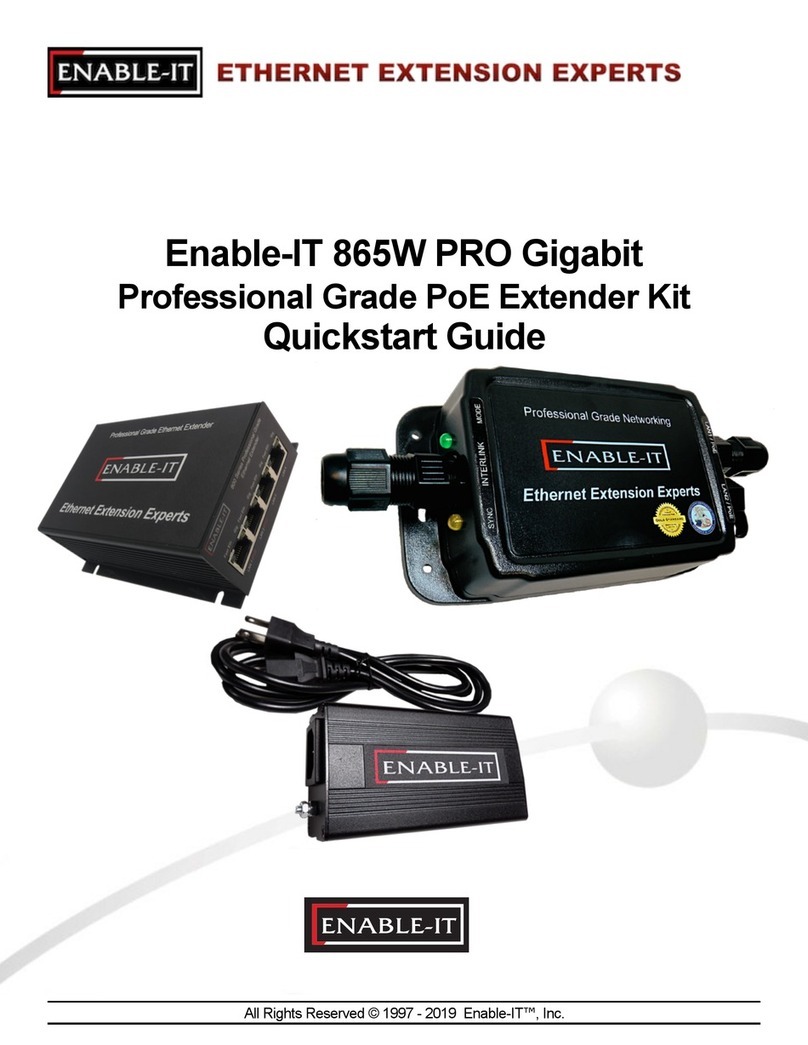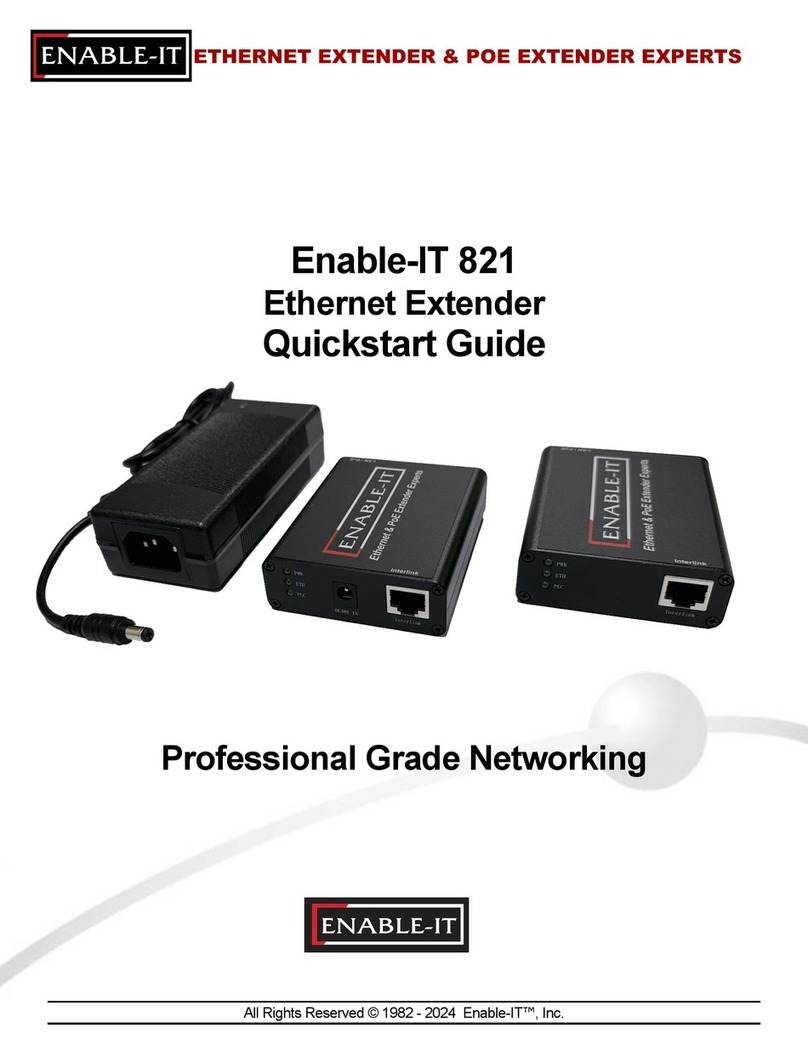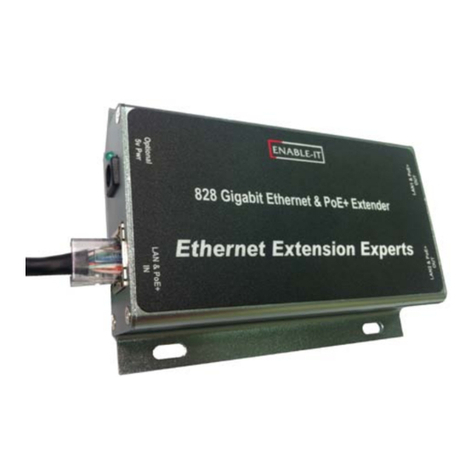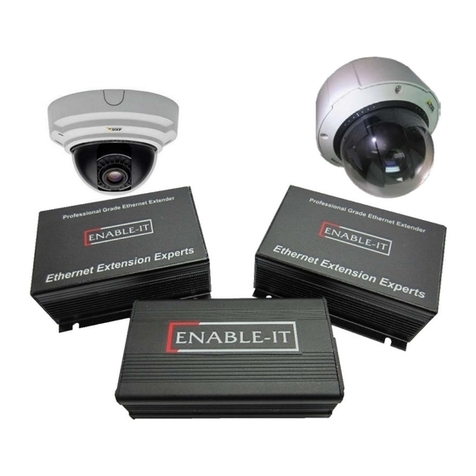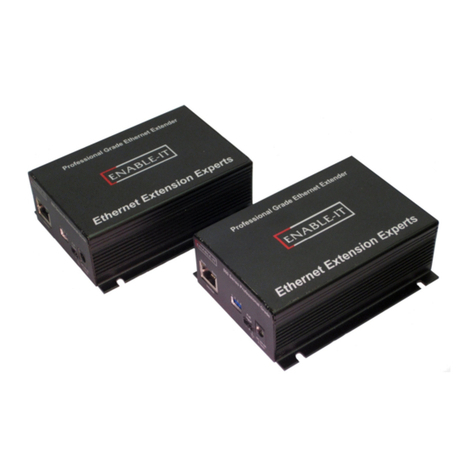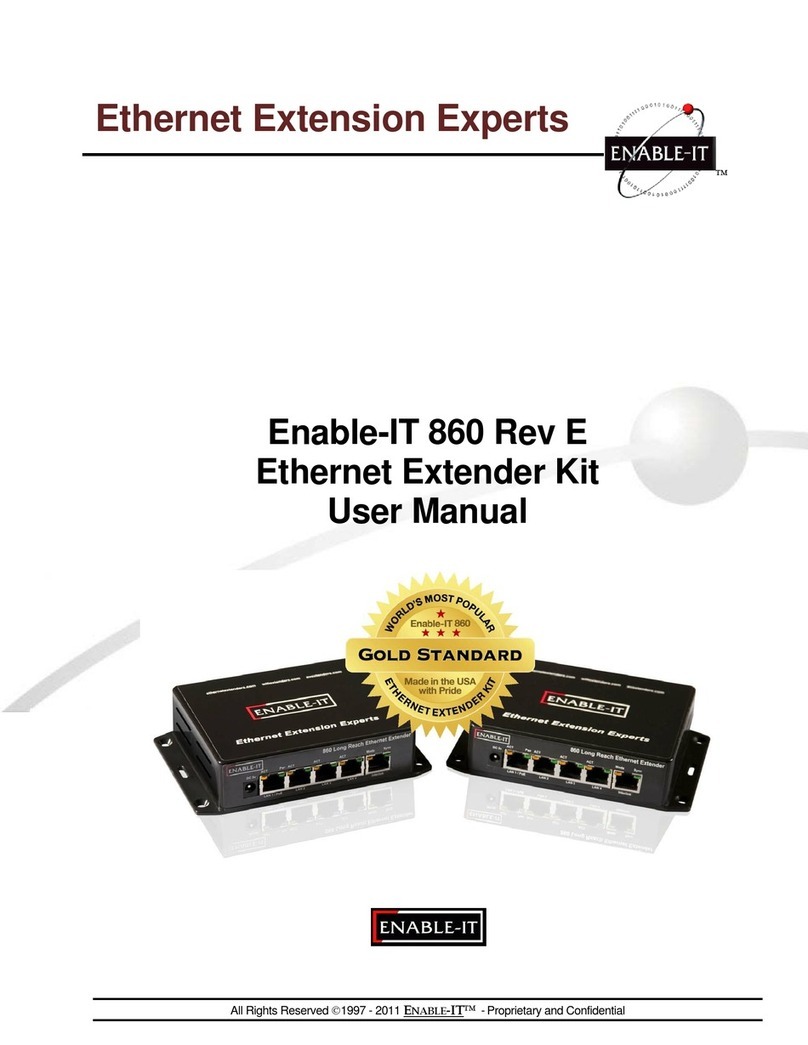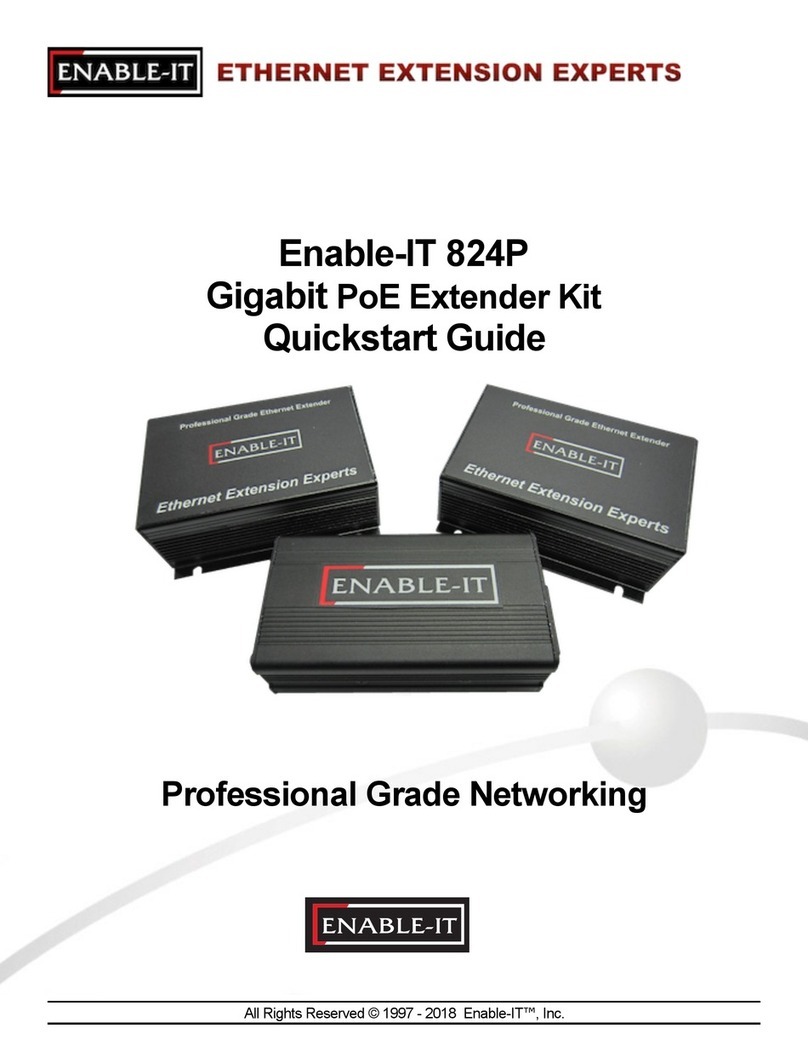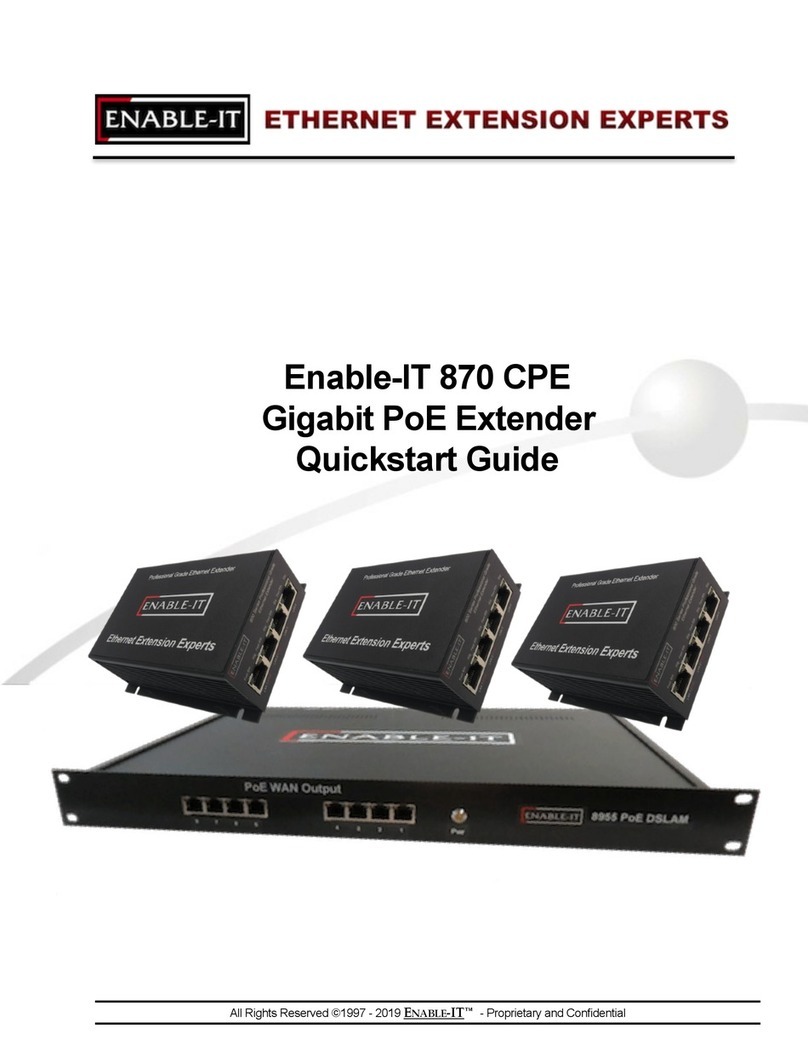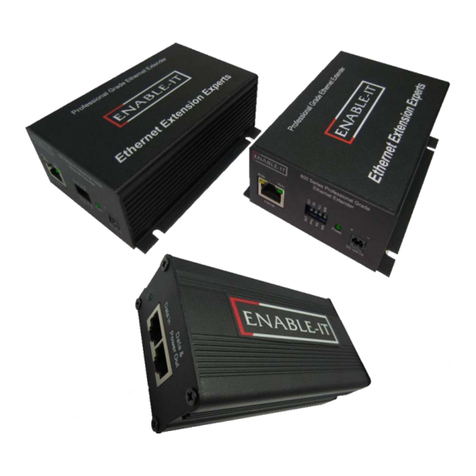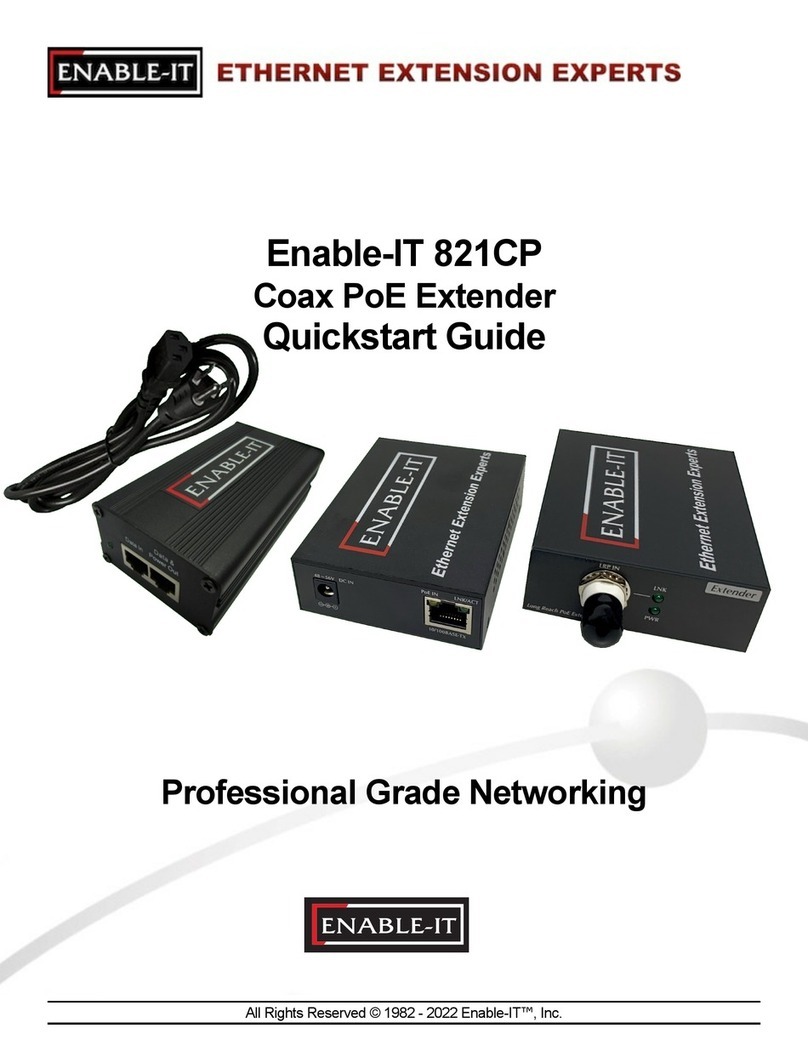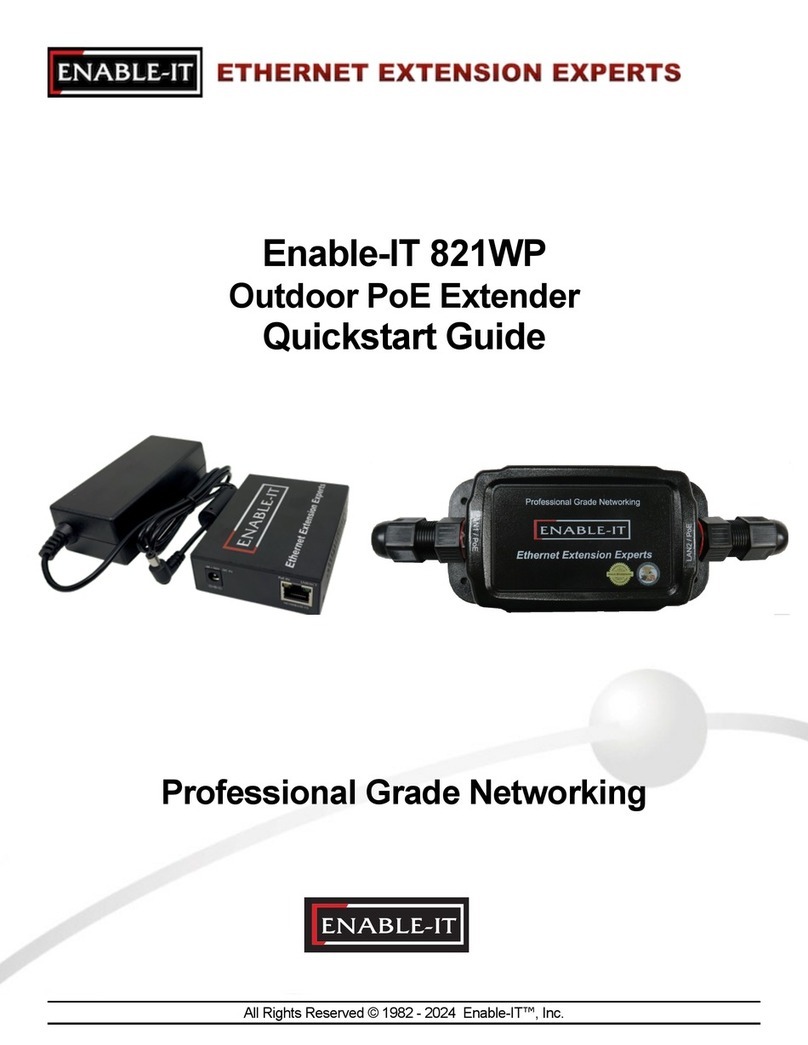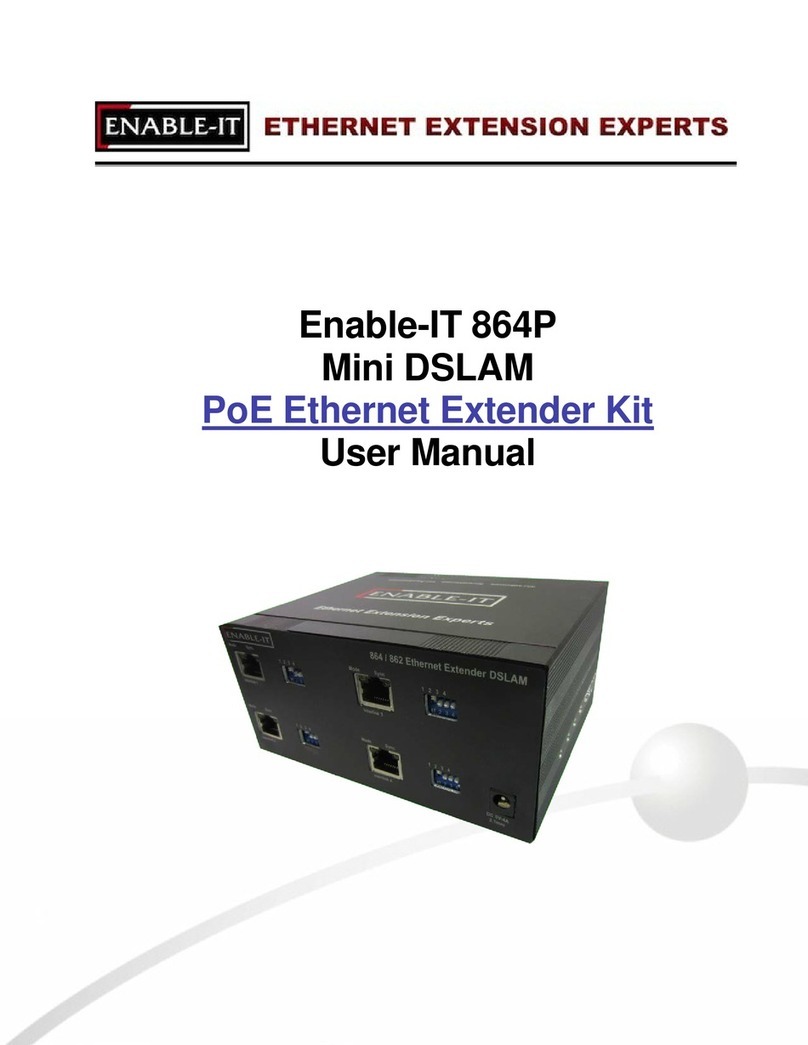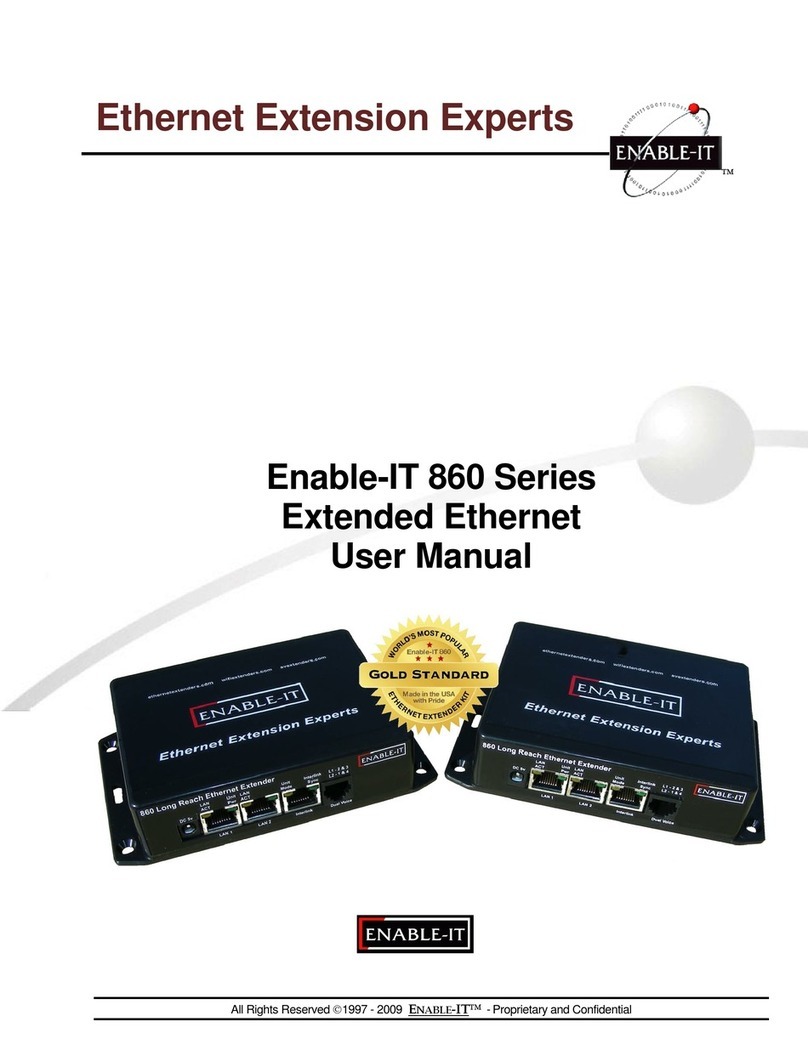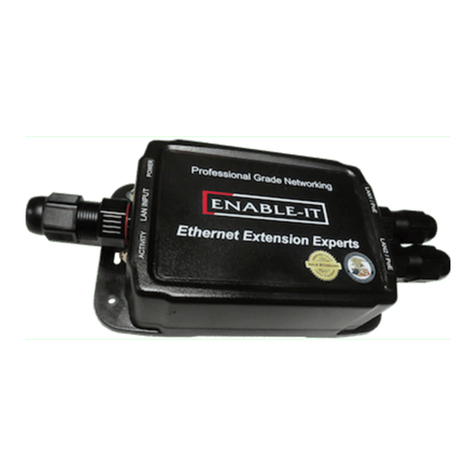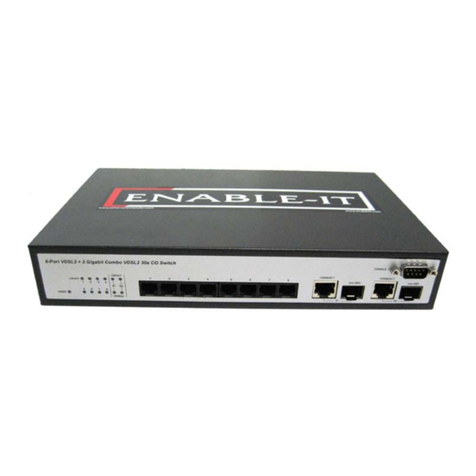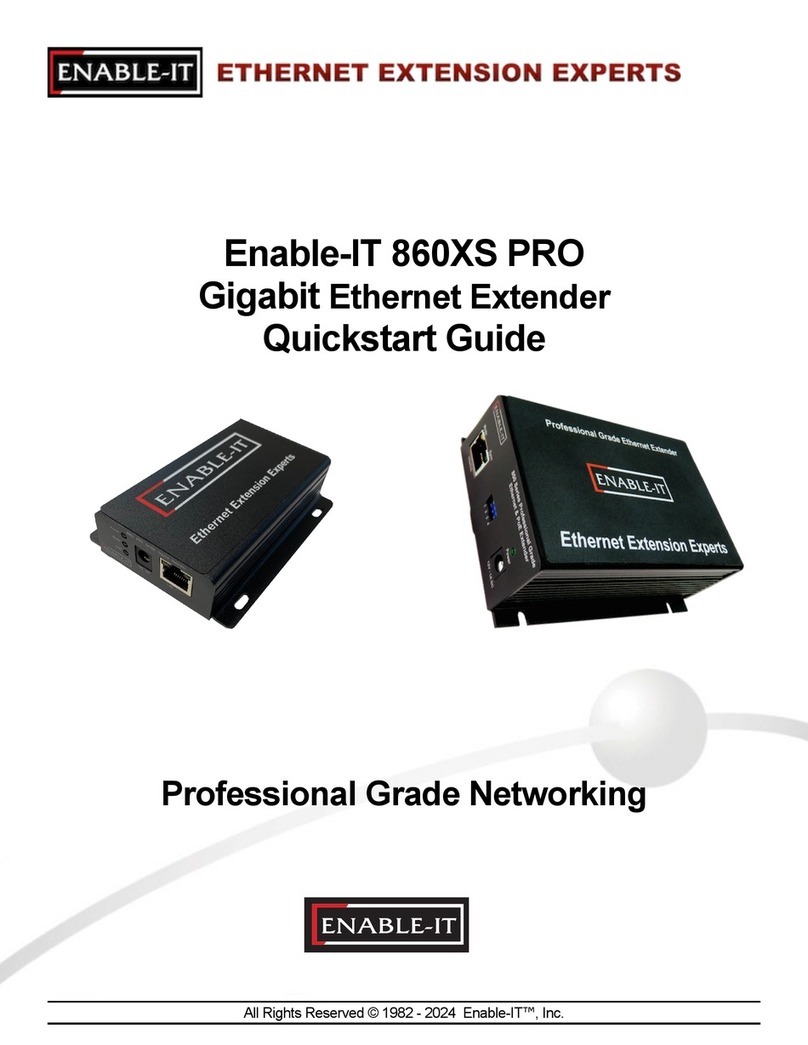LED indicators will provide visual operational status of the 860C Pro units and LAN
ports.
Sync - Slow to fast flicker on power up – indicates negotiation of a link.
Solid Green LED indicates link established and rapid pulse is traffic.
Pwr - Solid Green LED indicates that both units are receiving 5v power.
Mode - Solid Yellow LED on CPE unit only – No LED lit on CO
ACT - Yellow LEDs – Lit solid indicates the presence of local LAN
–Blinking indicates the presence of local LAN traffic
For troubleshooting, first examine the backbone wiring pair and make sure you have solid
connections. The Interlink Sync LED will be lit solid Green with rapid pulsing on each 860C
Pro unit to show proper connection and pairing. If the Interlink Sync LED Link is flashing slow
to fast and never goes solid... Then follow the steps below:
1) Make sure your wiring is straight through and not connected to any Telco punch
down block; If so remove from the block and use Telco butt clips to bridge wire.
2) Check for a firm connection of the RJ-45 connections or BNC connections in each
860C Pro unit, and power is applied to the 860C Pro CO & CPE units.
3) You can easily isolate any issue by performing an out of the box test confirm either the
860C Pro Kit or your wiring. It is possible an outside interference has been introduced
into your wiring.
Performance Settings
If you are experiencing performance issues with your Ethernet connection you may use the
following Dip switch settings to adjust your application. For Dip switch 2-4 you must toggle
both symmetrically, in other words the CO and CPE must match. If you turn 3 up on the CO
you must do so for the CPE and vice-versa.
•Dip Switch 1: Toggles the 860C Pro for either CO or CPE mode. (CO mode Up, CPE
mode Down)
•Dip Switch 2: This toggles your 860C Pro for either Interleave or Fast mode – Default
setting is set to Fast which is preferred for streaming multimedia, where an occasional
dropped bit is acceptable, but lags are less so. Interleave channel works better for file
transfers, where the delivered data must be error free but latency incurred by the
retransmission of errored packets is acceptable.
•Dip Switch 3: This toggles symmetrical/asymmetrical mode for dsl transmissions.
Symmetrical balances out the download/upload speed for transmitting data packets.
Asymmetrical mode weighs in favor of download speed while sacrificing upload speed
bandwidth. We suggest flipping Dip switch 3 Up (OFF) at a distance of 1,500 feet or less.

